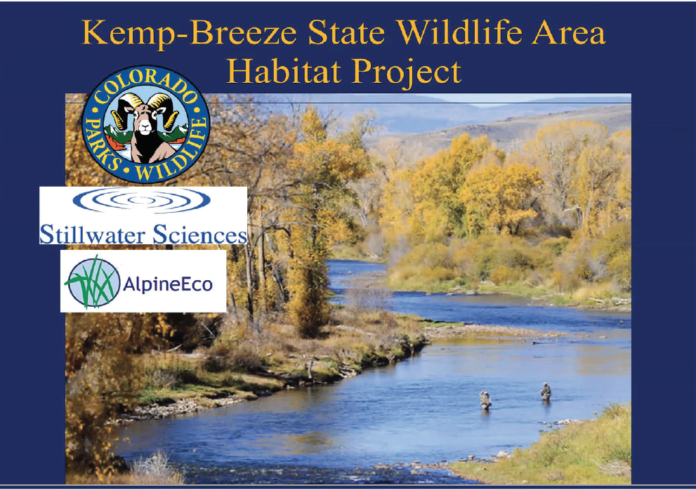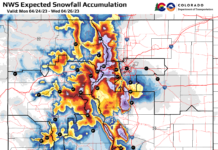
by Brian Mori
Give a fish, feed for a day. Teach to fish, feed for life. So, what happens when there are no more fish?
Over the last forty years, the Colorado River in Grand County has lost enough wildlife to threaten its rating as a world-class fishery.
A $1.2 million project is now being considered by the Colorado Parks and Wildlife Commission to reverse the unintended side-effects of over half-a-century of water control.
“In the Colorado (River) we have some processes that we believe are broken or severely reduced,” said Jon Ewert, the Area 9 Aquatic Biologist for Colorado Parks and Wildlife, during a Zoom presentation January 19. “These are keystone species that support the food web.”
Ewert said that populations of trout and the stone flies that feed them continue to fall. “In our best years we are equalling what the lowest years were historically,” he said about trout.
Sculpin, a small fish with sharp rays to help them anchor in rapid waters, have completely disappeared. “There is no (biological) reason why (Sculpin) should be absent from the main stem of the Colorado River,” Ewert said. “We do see them reappear in other parts of the Colorado in very high densities.”
There are over nine-thousand miles of water in Colorado home to trout species, according to Colorado Parks and Wildlife. Out of those, only 167 are considered “Gold Medal” destinations for fishing. The rating is based on the size and number that can be found within the determined area. Ewert said that if the trend continues, Grand County may lose that distinction.
The riparian project is estimated to begin in summer of 2022 and should be finished within one season, depending on permits. The goal is to restore conditions to the river that would naturally support the dwindling wildlife. The first phase will narrow the Kemp Breeze State Wildlife section so as to increase currents. This will hasten the flow of sediment, wood, and rocks that has been interrupted by damming and diversion. Insects and small fish depend upon the “riffle” space created by currents in the riverbed for their homes.
“(Sediment balance) is the first of what we hope to be many phases,” Ewert elaborated. “This project is going to look very different than a typical habitat project.” There are also plans to enhance riparian corridors and reconnect the floodplain.
The proposal includes several public and private environmental concerns, including Northern Water Conservancy District, Denver Water District, Stillwater Sciences and Alpine Eco, to name a few.
“It seems like it’s a little deep on the sides,” said Richard Strauss, a member of the public. “I haven’t heard anything about this design
being for fishing.” Strauss said he was concerned that creating multiple channels and islands will make it harder for anglers to enter. “That section of the river is going to look a lot different,” Ewert responded.
“The entire point of this is to increase the productivity of the recreational fishery on the state wildlife area.”
It was not clear when the project would go to public bid for construction, however Stillwater Sciences is not expected to complete their final proposal until March.
“We’re looking forward to this,” said Parks and Wildlife Commissioner Charles Garcia. “This means a lot to us.” Garcia is one of 11 commissioners who set policy for state parks and wildlife programs. Those interested in the bid process, donating, or volunteering to help plant vegetation should contact Randy Hampton, Public Information Specialist with Colorado Parks and Wildlife.








